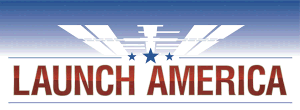LAUNCH VEHICLES AND STATUS
NASA SLS The 2010 National Space Policy ( NSP ) called for a new heavy lift launch vehicle which has become known as the Space Launch System (SLS). This launch system is not reusable. History Capabilities The first flight was Artemis 1 (previously Exploration Mission-1 (EM-1)) launched on November 16, 2022 with the Orion Multi-purpose Crew Vehicle (MPCV). Mission success!
SPACEX Falcon 9 To date this reuseable launch vehicle has enabled DRAGON to perform multiple and successful resupply missions to the ISS. The quoted payload weights are: LEO: is 22,800 kg ( 50,265 lbs ); GTO (Geostationary Transfer Orbit): 8,300 kg ( 18,300 lb ); Mars: 4,020kg ( 8,860 lbs ).
SPACEX Falcon Heavy First flight was February 6, 2018 launching a Telsa Roadster into space. This recoverable vehicle is reported to have: LEO is 63,800kg ( 140,660 lbs ); GTO: 26,700 kg ( 58,860 lb ); and Mars: 16,800 kg ( 37,040 lb ).
United Launch Alliance ATLAS 5 A proven workhorse (but not reusable) with 10 launch configurations. Lift capability to LEO ISS ranges from 8,910 kg ( 19,640 lbs ) to 17,720 kg ( 39,080 lbs ). Currently the Atlas-5 is the launch vehicle for the CST-100 Starliner - earlier reports included DREAM CHASER and BLUE ORIGIN.
United Launch Alliance VULCAN CENTAUR On April 13, 2015 at the 31st Space Symposium held in Colorado Springs ULA announced the VULCAN (not reusable) rocket. Anticipated payload to: LEO ISS ranges from 9,200 kg ( 20,300 lbs ) to 26,900 kg ( 59,300 lbs ); TLI ranges from 2,300 kg ( 5,100 lbs ) to 12,100 kg ( 3 6,700 lbs ). The First flight is projected for fourth-quarter 2023.
COMMERCIAL CREW PROGRAM - VEHICLES
STARLINER (CST-100 - Boeing) - Seven astronaut capacity. Boeing has leased the former Orbital Processing Facility (OPF) 3 for the CST-100 - it is now the Commercial Crew & Cargo Processing facility. Boeing also has a lease on OPF 1 to support the Air Force X-37B project. Starliner will be used for manned transport to the ISS and manned transport to Bigelow B330(s) has been alluded to. Initially the orbital test flight (OTF-1)was slated for March 2019 slipped to December 20, 2019. Boeing completed the Orbital Test Flight with full parachutes deploying for a ground recovery at White Sands on December 22, 2019. An independent review found 61 corrective actions to be addressed .
Boeing was schedued for OTF-2 on August 2, 2021 slipped to no earlier than July 21, 2023.
ORION (Lockheed-Martin) - Six astronaut capacity. Test launched December 5, 2014 it flew 3,600 miles (5,794 km) into the Van Allen Radiation Belt twice successfully testing avionics. Orion then flew out to a distance of 20,000 miles (32,190 km) for a full powered and successful 11-parachute reentry. Orion is not slated for LEO (ISS) use - it is currently for the ARTEMIS missions. Read about Lockheed Martins TO THE MOON AND BEYOND. I wish to stress to the readers that there are a lot of concerns just in going to the moon, predominately is sufficient radiation protection. During the Apollo flights astronauts reported seeing bright flashes - it was determined these flashes were cosmic radiation on the optic nerves. NASA has never commented on cancers involving the Apollo astronauts. Using ORION to go beyond the moon should include an additional module for the crew to move around in.
DRAGON (SpaceX) - Seven astronaut capacity. The unmanned version has completed multiple resupply missions to the International Space Station (ISS). SpaceX has been successful (so far) in crewed flights to the ISS.
DREAM CHASER (Sierra-Nevada) - Three to seven astronaut capacity. NASA did not initially select Dream Chaser for commercial crew transportation but this is expected to change for crewed ISS flights. It was slated to begin ISS resupply in 2019 which has been pushed out to December 2023 and currently is slated for launch by a Vulcan-Centaur.
U.S. Manned Space Status - Page 2
